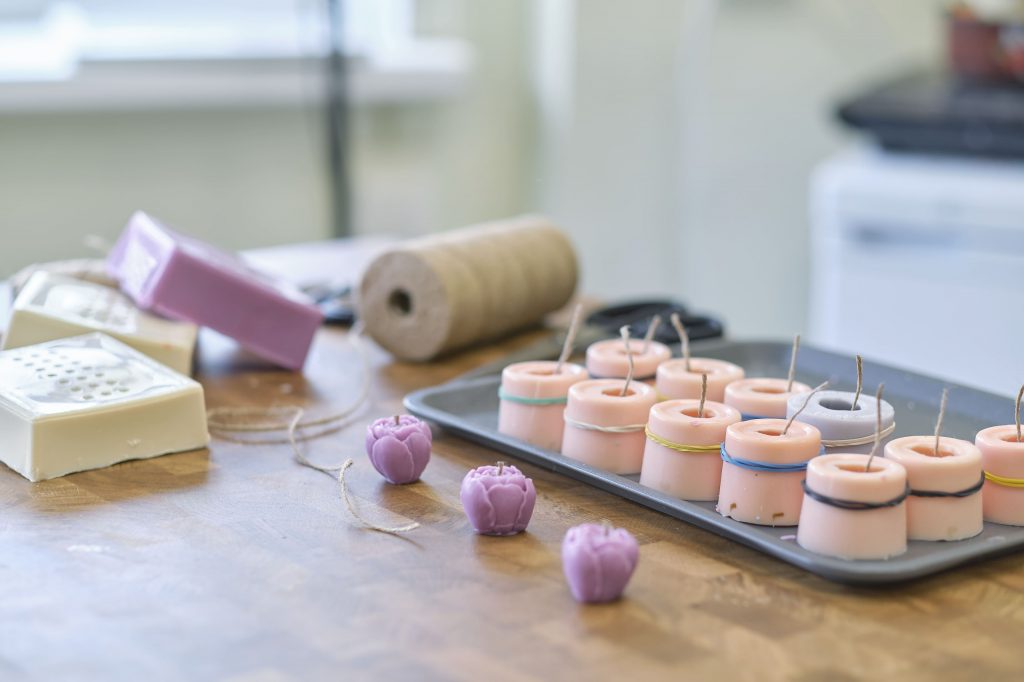Candle making is a wonderful and rewarding craft — but like any hobby involving heat and flammable materials, safety is essential. Whether you’re a beginner or looking to improve your technique, following some basic safety guidelines ensures your candle-making sessions are enjoyable and accident-free.
In this article, we’ll cover key tips to keep your workspace safe, your candles flawless, and your experience stress-free.
1. Set Up a Dedicated Workspace
Create a space just for candle making. Choose a flat, sturdy surface away from flammable objects like curtains, paper, or clutter. Ideally, work in a well-ventilated area to avoid inhaling fumes from melting wax or fragrance oils. Keep children and pets out of the workspace while you’re working to prevent accidents.
2. Use the Right Equipment
Invest in quality tools designed for candle making:
- Use a double boiler or a dedicated melting pot instead of direct heat. This reduces the risk of wax overheating or catching fire.
- Have a reliable thermometer to monitor wax temperature — overheating wax can ignite.
- Use heat-resistant containers for your candles to prevent cracking or breaking during cooling and burning.
- Avoid plastic or thin glass that can shatter.
3. Monitor Wax Temperature Carefully
Wax has a specific melting and pouring temperature range. Overheating can cause discoloration, fragrance loss, and fire hazards. Typically, soy wax melts around 120°F (49°C) and should be poured between 130-160°F (54-71°C), depending on the type.
Always use a thermometer and never leave melting wax unattended.
4. Handle Fragrance Oils Safely
Fragrance oils are concentrated and should be measured carefully. Some oils can irritate skin or eyes, so wear gloves if needed and avoid inhaling concentrated vapors directly. Follow manufacturer instructions regarding safe usage percentages.
5. Secure Your Wick Properly
A crooked or loose wick can cause uneven burning, excessive smoke, or even a fire hazard. Use wick stickers or a bit of melted wax to firmly anchor the wick to the bottom of your container before pouring. Use wick holders or chopsticks to keep the wick centered and upright during cooling.
6. Keep a Fire Extinguisher Nearby
Even with precautions, accidents can happen. A small fire extinguisher suitable for grease and wax fires (Class B) should be easily accessible. Never use water to put out a wax fire — it can spread the flames.
7. Clean Up Spills Promptly
Wax spills can be slippery and difficult to remove once cooled. Clean spills immediately using paper towels while the wax is still warm and pliable. For hardened wax, gently scrape it off or use a hairdryer to soften before wiping.
8. Allow Candles to Cure
Curing means letting your candles rest for a few days after pouring so the fragrance fully binds with the wax. This improves scent throw and burn quality. Be patient — it’s worth the wait.
9. Test Burn Every New Candle
Before gifting or selling, test burn your candles. This helps you identify any issues with wick size, fragrance load, or burning behavior. Watch for excessive smoke, uneven burn, or tunneling, and adjust your next batch accordingly.
Conclusion
Candle making is a joyful and creative hobby — and with the right safety practices, it’s also a safe one. Setting up a proper workspace, monitoring temperatures, handling materials carefully, and preparing yourself for the unexpected help you craft beautiful, fragrant candles without stress.
Enjoy the process, stay safe, and let your creativity shine bright!
